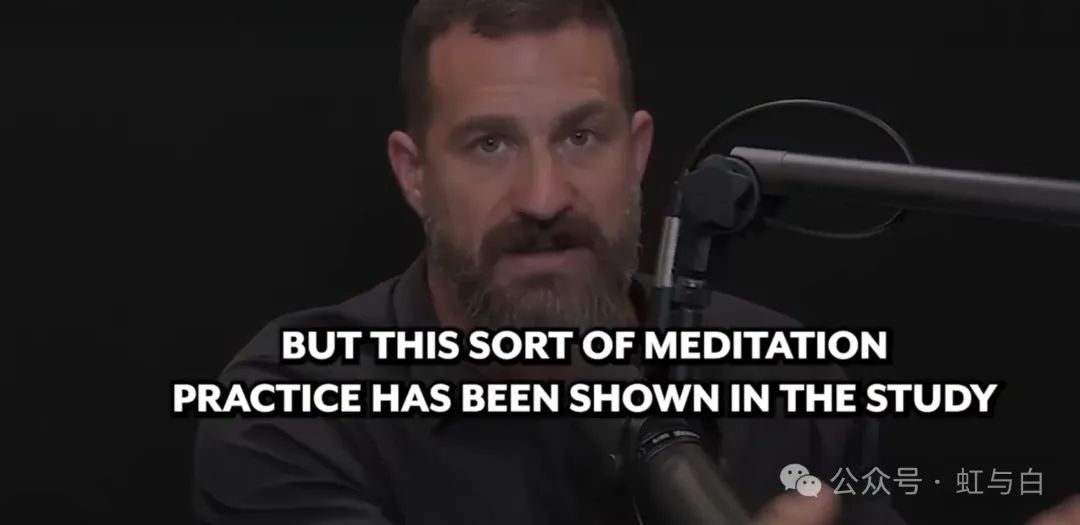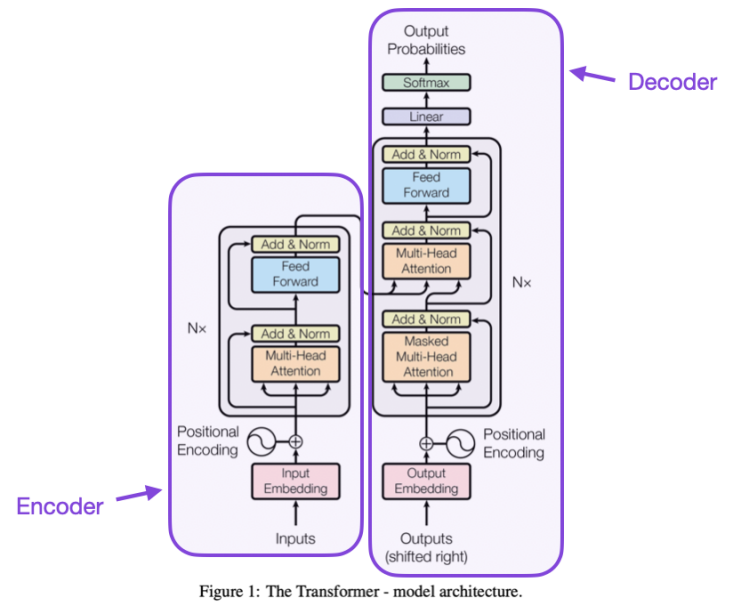網站名稱:斯坦福脑科学家:13分钟拥有超强专注力
網站地址:https://mp.weixin.qq.com/s/GxnXtZwIEHvoJ_KLqxpc3Q
EmpowerThyself|13分钟让你拥有超强专注力。[1]介绍这篇内容介绍了斯坦福神经科学家AndrewHuberman的一种可以显著提高专注力和集中力的13分钟冥想法。这种方法在他的YouTu…
[SEO信息] [Alexa信息]
-->>直達網站

Empower Thyself | 13分钟让你拥有超强专注力。[1]
介绍
这篇内容介绍了斯坦福神经科学家Andrew Huberman的一种可以显著提高专注力和集中力的13分钟冥想法。
这种方法在他的YouTube视频中被详细阐述。此外,这种冥想法也在书籍《改变状态》中得到了提及。
冥想的方法很简单,只需坐下或躺下,闭上眼睛,专注于呼吸,并将注意力集中在前额后方大约一英寸的地方。
这种冥想法通过反复训练大脑中的网络,强调专注和重新专注,帮助人们提高专注力和集中力。

重点内容
重点笔记
每天进行13分钟的冥想可以显著提高专注力和集中力,同时也能改善其他方面的认知性能。它还能改善心情并减轻压力。
冥想时,坐下或躺下,闭上眼睛,只需专注于你的呼吸,并将你的感知意识集中在你的前额内大约一英寸的地方。
在冥想中,人的思绪会飘走,但这并非失败,反而是让我们有机会重新集中注意力,这是提高专注力和集中力的重要部分。
无论冥想时长为13分钟,还是17分钟,或者更长,关键在于练习专注和重新专注的过程,而不是全程保持专注的状态。

践行步骤
设定一个13分钟的计时器。
坐下或躺下,闭上眼睛。
专注于你的呼吸,将你的感知意识集中在你的前额内大约一英寸的地方。
当注意力漂移时,重回专注状态,继续集中在你的前额内大约一英寸的地方,并专注于你的呼吸。

涉及人物:Andrew Huberman
Andrew Huberman是一位著名的神经科学家,他在斯坦福大学担任神经生物学教授。他的研究领域包括神经塑性和神经再生,他的工作主要集中在视觉系统的神经再生和塑性。
Huberman博士的研究还包括研究如何通过行为和其他方法改善人类的学习、记忆、情绪调节和视觉系统表现。
他的工作不仅在学术界得到了广泛的认可,而且他也在社交媒体和大众媒体上有广泛的影响力,倡导科学知识的普及和教育。

中英全文
1 Purely behavioral tools, that quality peer-reviewed science says, can improve focus and concentration significantly. A 13-minute meditation done every day for a period of eight weeks, that meditation led to significant improvements in focus and concentration ability as well as other aspects of cognitive performance. It also improved mood and reduced stress. So, you might be wondering, what exactly is this meditation? The meditation is very simple, and it's one that anyone can perform. What you would want to do is set a timer for 13 minutes. You would sit or lie down, close your eyes, and you would simply focus on your breathing. Most people are going to benefit from only doing that breathing through their nose. But if you have some sort of obstruction or inability to breathe just through your nose, you could probably also do it by breathing through your nose and mouth, or just your mouth. But ideally, you would do just nasal breathing for a period of 13 minutes, concentrating on that breathing and concentrating meaning bringing your awareness, your interceptive awareness, to a point just about an inch inside of your forehead. Now, of course, that might sound kind of gory to some of you, you've never actually been inside your forehead.
根据经过同行评审的高质量科学研究,有一种纯行为工具可以显著提高专注力和集中力。
这就是每天进行13分钟的冥想,连续进行八周,这种冥想可以显著提高专注力和集中力的能力,同时也能改善其他方面的认知性能。它还能改善心情并减轻压力。
你可能想知道,这个冥想究竟是什么?这个冥想非常简单,任何人都可以做。你需要做的是设定一个13分钟的计时器,坐下或躺下,闭上眼睛,只需专注于你的呼吸。大多数人只通过鼻子呼吸就能从中受益。
但是,如果你有某种阻碍或无法只通过鼻子呼吸,你可能也可以通过鼻子和嘴巴,或者只用嘴巴呼吸。
但理想情况下,你应该只通过鼻子呼吸,持续13分钟,将注意力集中在呼吸上,同时将你的感知意识集中在你的前额内大约一英寸的地方。
2 But, just about an inch behind your forehead is where you would want to place your concentration while also concentrating on your breathing. Now, here's the thing about meditation that all studies of meditation show: unless you are a very experienced meditator, your concentration, your focus will drift away from your breathing and away from that location about an inch inside your head, inside your brain, about just behind your forehead. That will happen maybe every 10 seconds, every 20 seconds, maybe even every five seconds. But an important part of such a meditation practice to improve concentration and focus is that you are continually refocusing back to that specific location and refocusing back on your breath. This is something that again, is not often discussed. People think that if you do a meditation and you're supposed to concentrate on your breath, that if your mind drifts, that somehow you failed in that meditation. But actually, that's not the case. A huge component of improving your ability to focus and concentrate by way of neuroplasticity, rewiring of the circuits for focus and concentration, is the repeated return to a state of focus from a state of non-focus or diminished Focus. Okay, so think about it like trying to drive down the freeway and staying between the lane lines and every once in a while, because there's a bit of drift on the vehicle, it starts to drift right a little bit; then you hit the rumble strip, and then you pull back to the center. That's really what a focused meditation practice is about, as opposed to expecting yourself to stay between the mental Lane lines, so to speak.
你需要将注意力集中在你前额后方大约一英寸的地方,同时也要专注于呼吸。
然而,关于冥想的所有研究都显示,除非你是一位非常有经验的冥想者,否则你的注意力、你的专注力会不自觉地从你的呼吸和你大脑内部那个特定的地点漂走。这种情况可能每10秒、每20秒,甚至每5秒就会发生一次。
但这种冥想练习的一个重要部分是,你需要不断地重新将注意力集中回到那个特定的位置,重新专注于你的呼吸。
人们常常误解,以为如果你在冥想时,被要求专注于呼吸,但你的思绪却飘走了,那么你就失败了。但实际上,并非如此。
通过神经可塑性,重新连接专注和集中的神经回路,从而提高你的专注力和集中力的能力,重要的一环就是反复地从无专注或减少专注的状态回到专注的状态。
可以将其想象为在高速公路上开车,你需要保持车辆在车道线之间行驶,但车辆偶尔会因为一些小的偏离而偏向右边,这时你会碰到隆隆声的防撞带,然后你就会重新将车拉回中心。这就是专注冥想的真正含义,与期待自己始终保持在精神的车道线之间有所不同。
3 If you're going to practice the 13-minute meditation every day, sit or lie down, close your eyes, and concentrate on your breath. Focus your attention on a location about an inch behind your forehead and fully expect that at some point, you'll be thinking about something else. That's a cue to refocus to that location just about an inch behind your forehead and back to your breath. By doing this repeatedly, you're training the network within your brain that includes the prefrontal cortex you're focusing on, as well as some other structures like the infotemporal cortex and the hippocampus, a structure associated with memory. Other components of the neural circuit involved in directing our mental focus and concentration are also trained. This practice emphasizes focusing and refocusing.
如果你打算每天练习13分钟的冥想,坐下或躺下,闭上眼睛,专注于你的呼吸。
将你的注意力集中在你前额后方大约一英寸的位置,并充分期待你的思绪在某个时候会飘向别处。这就是一个提示,让你重新将注意力集中在你前额后方大约一英寸的位置,并重新回到你的呼吸。
通过反复这样做,你正在训练你的大脑内部的网络,包括你正在专注的前额皮质,以及其他一些结构,如颞下皮质和与记忆有关的海马体。
参与引导我们精神专注和集中的神经回路的其他组成部分也得到了训练。这种练习强调专注和重新专注。
4 In fact, I would prefer to call such a practice a "Refocus Focus" meditation. This sort of meditation practice has been shown in the study, the Suzuki lab, and other studies to really improve people's ability to focus and remain focused. So much so that in the beautiful book "Altered States", they describe a number of different meditation practices, some a little bit longer than the one that I described, one that's 17 minutes, another one that's 30 minutes. Some people meditate as long as 60 minutes a day, although that's quite a long time in my opinion. The point here isn't how long you focus or somehow trying to achieve total focus for the entire 13 minute, or 17 minute, or 60-minute bout of meditation. While that would be wonderful, and I think many people aspire to do that, that's a lot of hard mental work. I think for most people out there, including myself, a relatively short meditation practice of about 13 minutes, in which you fully expect your focus and concentration to drift but that you are continually refocusing, is going to be the most effective. Yes indeed, the most effective at teaching yourself to focus and stay concentrated.
事实上,我更愿意将这种练习称为“重聚专注”冥想。这种冥想实践已在铃木实验室等研究中得到证实,可以显著提高人们的专注力和保持专注的能力。
在《改变状态》这本精彩的书中,描述了许多不同的冥想实践,有些比我所描述的要长一些,有的是17分钟,有的是30分钟。有些人一天冥想长达60分钟,尽管在我看来这是相当长的时间。
这里的重点不在于你专注的时间有多长,或者试图在整个13分钟、17分钟或60分钟的冥想时间内实现全神贯注。虽然那会很美妙,我想许多人都渴望这样做,但那需要大量的精神努力。
我认为对于大多数人来说,包括我自己,一个大约13分钟的相对短的冥想实践,其中你完全预期你的专注力和集中力会漂移,但你一直在重新聚焦,将会是最有效的。的确,这是教自己专注和保持集中的最有效方法。

结束
参考资料
Empower Thyself | 13分钟让你拥有超强专注力。: https://www.bilibili.com/video/BV19K41147rk/?spm_id_from=333.999.0.0&vd_source=1d44f7f1239b6bab3592038d5e406da0
本文爲轉帖,原文鏈接如下,如有侵權,請聯繫我們,我們會及時刪除
原文鏈接:https://mp.weixin.qq.com/s/GxnXtZwIEHvoJ_KLqxpc3Q Tag: 专注力






